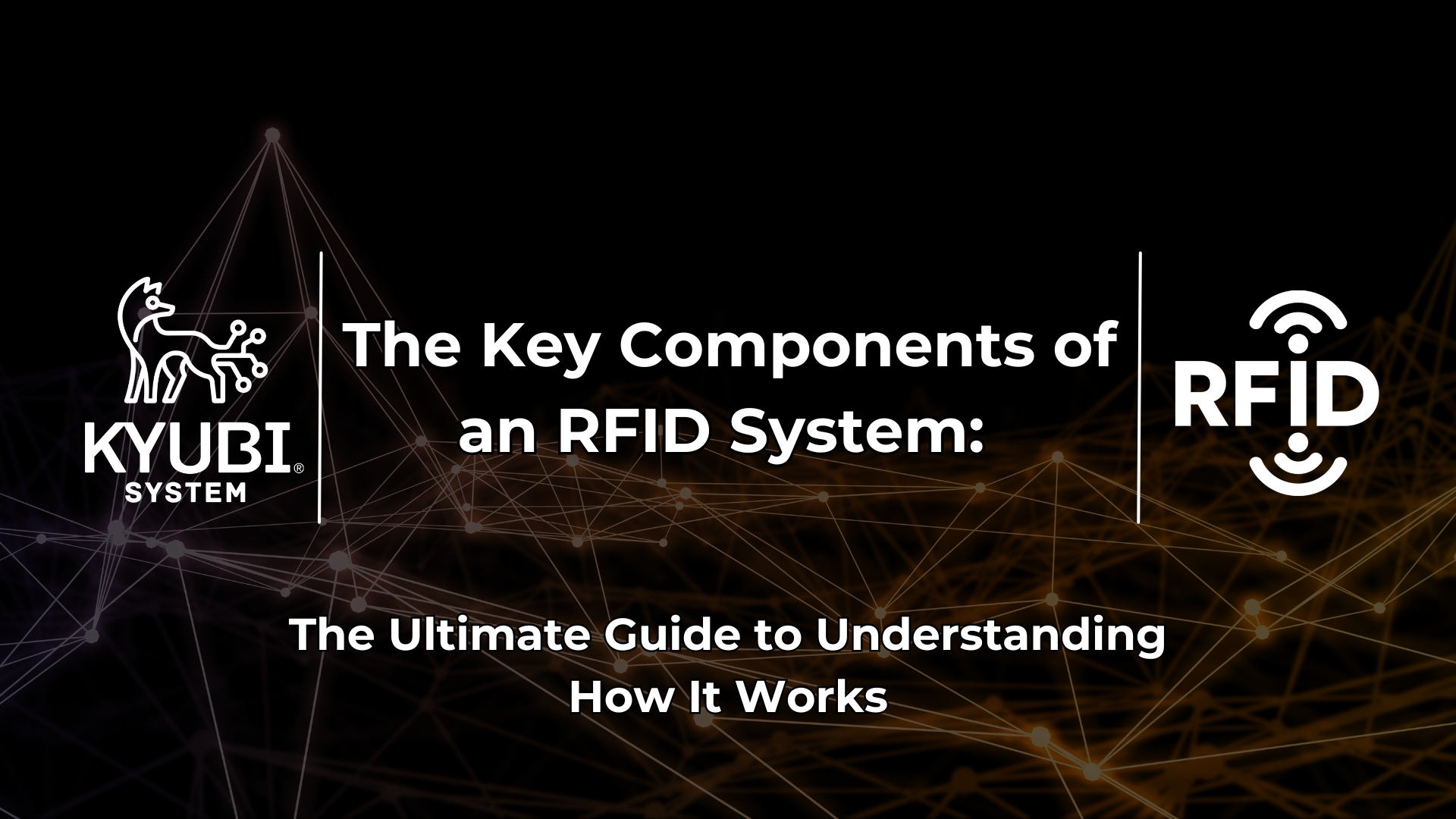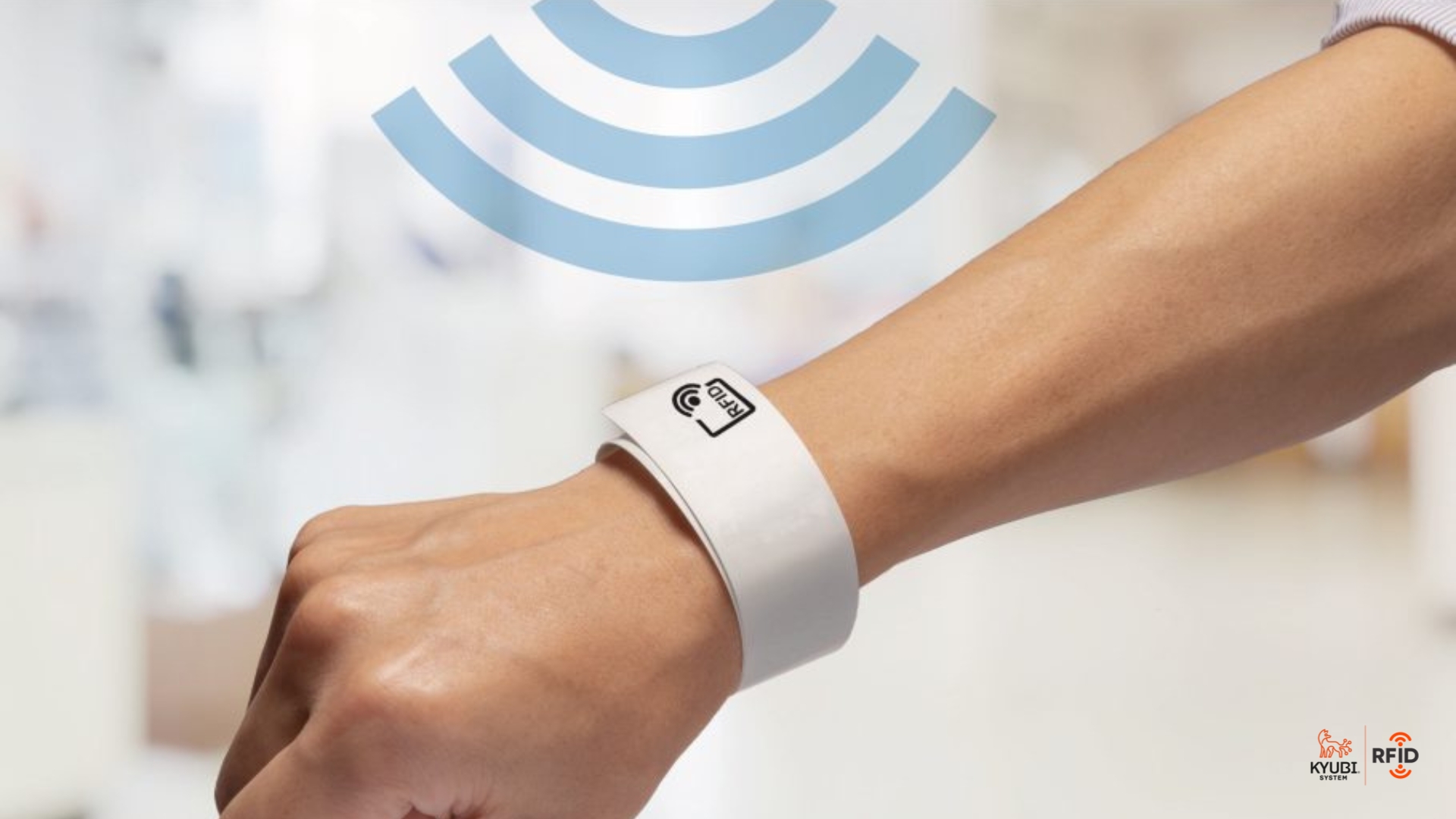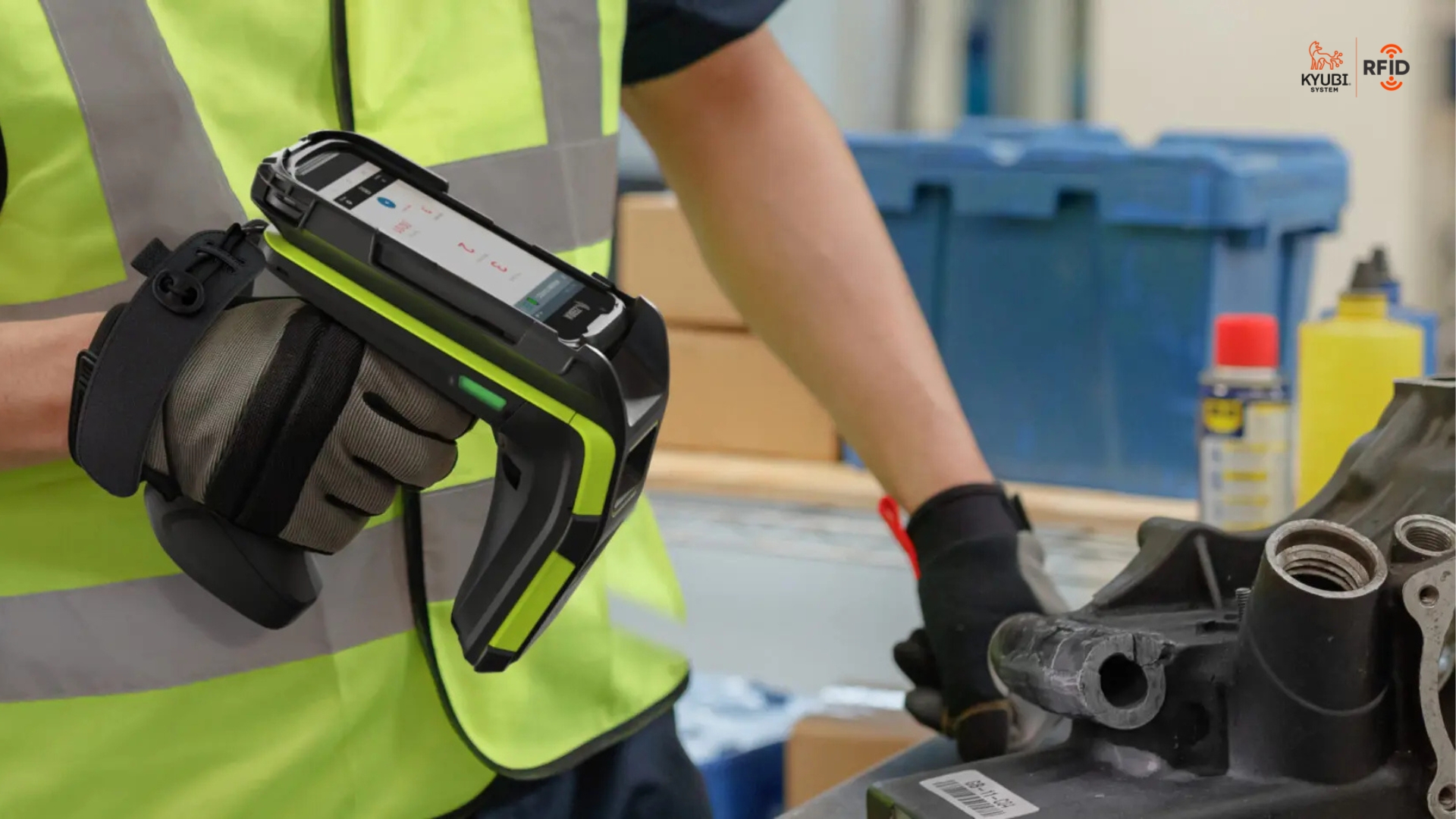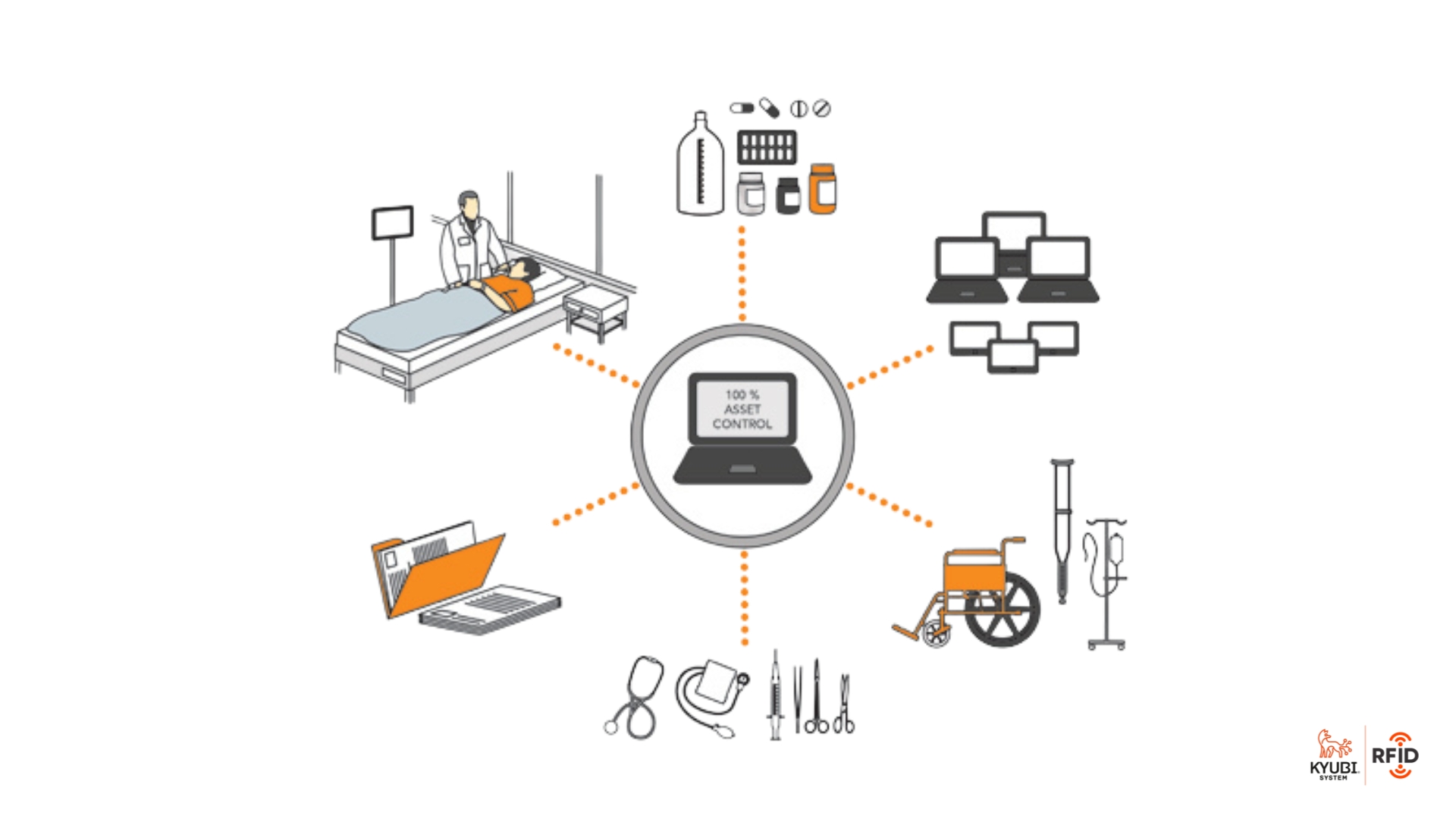
The Definitive Guide to Understanding How It Works
Does your business need to improve inventory management, increase supply chain visibility or automate access control processes? If the answer is yes, RFID technology is a solution you can’t ignore. But do you really know how an RFID system works and what are the essential parts that make it possible?
Understanding the key components of radio frequency identification is the first step to unlocking its enormous potential and selecting the right RFID solution for your specific needs. It’s not just about tags and readers; it’s the intelligent interaction of each element that drives efficiency, traceability and automation in the real world.
In this definitive guide, we’ll take you by the hand through the fundamental components of any successful RFID system. We’ll explain what they are, what they’re for and how they work together to deliver tangible benefits to your operation. Get ready to gain a clear, practical insight into this transformative technology.
Let’s discover the essential parts that make up a complete RFID system:
The RFID Tag (Tag or Transponder) 1: The Digital Identity Carrier
The heart of RFID identification lies in the RFID tag, also known as RFID tag or transponder. This small device is the element that attaches to objects (products, assets, pallets, etc.) to give them a unique, wirelessly communicable identity. Unlike traditional identification methods, the RFID tag does not require visual contact or specific orientation to be read, one of its greatest advantages.
Each RFID tag is mainly composed of two parts:
-
The Microchip (Integrated Circuit): Stores the unique identifier and other data associated with the object. This chip can be read-only, read/write (allowing the information to be updated) or have one-time programmable memory.
-
The Antenna: This is the conductive element that allows the tag to capture the energy of the radio waves from the reader (in passive tags) and transmit its information back.
There are a variety of RFID tag types designed for different environments and applications. The most common are:
-
Passive RFID tags: These are the cheapest and most widespread. They do not have their own battery; they obtain their energy from the radio frequency field emitted by the reader.
-
Active RFID tags: Equipped with an internal battery, they allow a longer reading range (up to several hundred metres) and the ability to transmit data proactively.
-
Semi-passive RFID tags (BAP): Use a battery to power the chip, which improves sensitivity and performance.
 RFID Wristbands
RFID Wristbands
2. The RFID Reader (Interrogator): The Communication Interface
The RFID reader, also called the interrogator, is the essential component that interacts with the tags to read and/or write information to them. It is the point of connection between the tags and the system that processes the data.
Its main function is to generate a radio frequency field through its antenna. When an RFID tag enters this field, it responds by sending the stored data. The reader picks up this radio signal, decodes it and transmits it to the computer system for processing.
RFID readers are adapted to a variety of operational needs:
-
Fixed Readers: Installed at strategic points such as entry/exit gates, production lines or reading stations. They automate identification without manual intervention.
-
Mobile Readers: Portable devices or devices integrated in vehicles. They allow fast inventories, shipment verification or maintenance on the move.
 RFID Detection
RFID Detection
3. The RFID Antenna: The Invisible Radio Frequency Bridge
Although often attached to the reader or tag, the RFID antenna is such a crucial component that it deserves to be highlighted. It is the physical element that enables the transmission and reception of the radio waves necessary for wireless communication between the tag and the reader.
The reader’s antenna is responsible for generating the radio frequency field that energises the passive tags and enables communication. Its design, size and polarisation (linear or circular) are critical factors that determine the shape of the read field, the range and the reliability of the system in different environments. A successful RFID implementation often depends on the correct selection and positioning of antennas.
The tag antenna, on the other hand, is optimised for the specific frequency on which the system operates and for the type of tag (passive, active). Its efficiency is key for the tag to communicate correctly with the reader.
 Transporting Logistics
Transporting Logistics
4. RFID Software and Management System: Operational Intelligence
Reading data from thousands of tags in seconds would be useless without the ability to process, analyse and use that information effectively. This is where RFID management software and the associated IT system become the key component that closes the loop, providing operational intelligence.
This component is the mastermind that receives the raw RFID data from the reader, filters it, organises it and integrates it with other business systems (such as ERP systems, WMS – Warehouse Management System, inventory control databases, CRM, etc.).
Advanced RFID software functionalities include:
-
Data Collection and Consolidation: Efficient management of the high volume of data read.
-
Processing and Filtering: Eliminates duplicate reads, validates information and enriches it with data from other sources.
-
Systems Integration: Ensures that RFID information flows correctly to where it is needed.
-
Analysis and Reporting: Turn data into valuable information through dashboards, customised reports and real-time alerts.
-
Workflow Automation: Define automatic rules and actions based on tag reading events (e.g. generate alerts, update stock, etc.).
RFID software is the component that transforms simple identification into process optimisation, informed decision making and competitive advantage. Choosing robust and adaptable software is vital to maximise RFID benefits.
 RFID Framework
RFID Framework
Understanding the RFID System: The Synergy that Drives Success
In short, the power of an RFID system lies in the perfect synergy between its key components: the RFID tag as the data carrier, the RFID reader as the communication channel, the RFID antenna as the wireless link facilitator and the RFID management software as the intelligence processor.
Understanding how these essential parts work is fundamental not only to understanding RFID technology, but also to identifying the solution that best fits your business challenges and objectives. It allows you to visualise opportunities to improve operational efficiency, optimise inventory management, ensure complete traceability and gain real-time visibility.
If you are considering RFID implementation and are looking for a solution tailored to your needs, understanding these key components is a crucial step. For expert advice and to explore how RFID technology can transform your operation, contact automatic identification solutions specialists.
Frequently Asked Questions (FAQ) about RFID Components
-
How many basic components does an RFID system have?
A basic RFID system consists mainly of 4 key components: the RFID tag, the RFID reader, the RFID antenna and the software/management system. -
What is the most important component of an RFID system?
All components are essential and work together. The tag stores the information, the reader reads it, the antenna facilitates communication and the software processes the data. Failure or poor selection of any one of them can affect the performance of the entire system. -
Do I need a separate antenna if the reader already has one?
Some readers have built-in antennas, but to optimise the area and reliability of reading, especially in large areas or difficult conditions, additional external antennas connected to the reader are often used. -
Can an RFID tag work without a reader?
No, an RFID tag (especially passive tags, which are the majority) needs to interact with a reader in order to be energised and for information to be read or written to it. -
What is the difference between an RFID tag and a barcode?
The RFID tag is read without direct visual contact and can store more data than a barcode. The data in an RFID tag can also be updated (in read/write tags), whereas a barcode is read-only.
